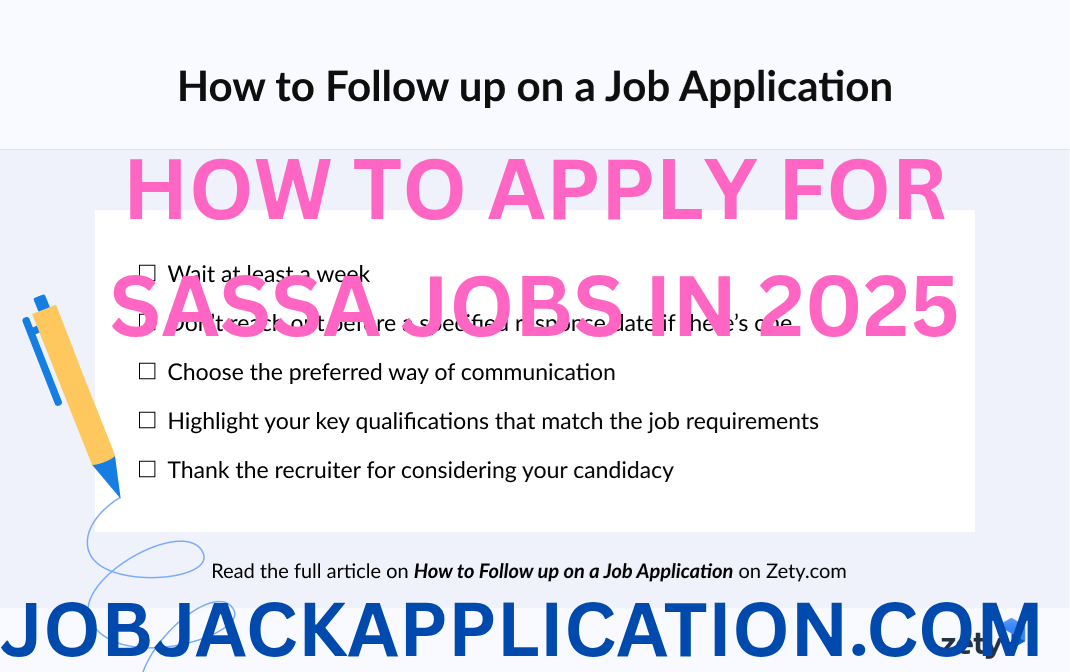ONLINE COURSES THAT PAYS YOU TO LEARN 2025
If you’ve been searching for online courses that pays you to learn 2025, you’ve probably noticed two truths:
- Most “free” courses don’t actually pay you.
- The real ways to get paid while learning in 2025 are usually apprenticeships, stipended training, government-funded upskilling, or employer-sponsored programs with significant online components.
This guide separates hype from reality. You’ll find 27 legitimate, current options to earn money while you learn online across the US, UK, and Canada, with official sources and practical steps to get in. We’ll cover paid tech and business apprenticeships, government benefits and grants during training, nonprofit programs with stipends, and rewards-for-learning platforms (with crucial 2025 updates).
How to Read This Guide (and Why It’s Different)
- Verified sources only. We cite official government pages and program sites so you can check details yourself.
- US/UK/Canada scope. We focus on top-tier countries employers recruit from and that fund “earn while you learn.”
- Actionable filters. Each option notes: who it’s for, what you get paid, what’s online/hybrid, how to apply.
Quick reality check: When people say online courses that pays you to learn 2025, 90% of the time the best matches are Registered Apprenticeships (US), apprenticeships/degree apprenticeships (UK), and apprenticeships, EI support, and Mitacs-style internships (Canada). These are real jobs or stipends with structured online learning modules. (Apprenticeship.gov, ucas.com, canada.ca)
Section A — United States: Paid “Earn-While-You-Learn” (with Online Components)
1) U.S. Registered Apprenticeship (RA): Paid From Day One
What it is: A job + structured training + related instruction (often online) that leads to a recognized credential.
Pay: Paid job from day one with progressive wage increases as you master skills. (Apprenticeship.gov)
Outcomes: DOL highlights ~90% employment retention post-completion and ~$80,000 average starting salary for completers (figures vary by field and location). (DOL Blog, Apprenticeship.gov)
Apply: Search opportunities at Apprenticeship.gov and state labor sites. (Apprenticeship.gov, Department of Labor)
Why this fits “online courses that pays you to learn 2025”: The “related instruction” piece is frequently delivered online now, especially in IT, cybersecurity, and business operations. You’re earning a paycheck while completing those modules. (Apprenticeship.gov)
Pro tips (US):
- Use the Career Seekers portal to filter apprenticeships that mention remote/online instruction. (Apprenticeship.gov)
- Don’t ignore energy, healthcare, and financial services—these sectors have expanding RA tracks with blended learning. (The Department of Energy’s Energy.gov)
2) Multiverse (US & UK): Paid Digital and Data Apprenticeships
What it is: Tech and business apprenticeships (data, digital marketing, business ops) blending online coaching and curriculum with paid employment at partner companies.
Pay: “Competitive salary” from the employer; Multiverse notes apprentices can earn a salary while they learn. Some US pages cite ranges such as $50,000–$70,000 (role and employer dependent). (multiverse.io)
Why it fits: Substantial online learning + mentorship with a real wage.
Apply: Browse programs and the Multiverse platform. (multiverse.io)
3) OpenClassrooms (US): Paid U.S. Tech Apprenticeships with Online Instruction
What it is: U.S. Department of Labor–registered apprenticeship tracks in roles like Help Desk Technician, Data Analyst, and Cybersecurity Analyst, combining paid, on-the-job learning with online, project-based instruction (1 day/week of instruction is common). (OpenClassrooms)
Pay: Apprentices earn a wage from the employer while completing online instruction. (OpenClassrooms)
Apply: Check the OpenClassrooms U.S. apprenticeship pages for current cohorts. (OpenClassrooms)
4) IBM, State & Federal Employers, and Industry Programs
What it is: Many large employers (IBM, state agencies, utilities, hospital systems) sponsor Registered Apprenticeships or “apprenticeship-like” programs with online coursework.
Why it fits: You earn a wage while completing online courses from internal academies or partner providers; the RA framework enforces wage progression and credentialing. (Apprenticeship.gov)
How to find them: Search Apprenticeship.gov and employer career sites for “apprenticeship,” “trainee,” “associate program,” or “learn while you earn.” (Apprenticeship.gov)
5) State-Supported Apprenticeship Hubs
What it is: State labor departments (e.g., Maryland, Delaware, New York) centralize paid apprenticeship listings and explain online instruction components. (labor.maryland.gov, Delaware Department of Labor)
Why it fits: You’re paid as an employee while completing course modules (often online) tied to your occupation. (labor.maryland.gov)
6) Workforce Innovation and Opportunity Act (WIOA) + RA
What it is: RA programs coordinated with WIOA youth/adult services, often covering fees for related online instruction and support services while you earn.
Why it fits: Combines paid RA employment with support dollars for the instructional (often online) side. (Apprenticeship.gov)
7) Nonprofit “Stipend + Training” Pathways (US)
- Year Up and similar workforce nonprofits (availability varies by city) provide training with stipends during the classroom phase and support placement into paid work; many incorporate online course delivery. (Confirm eligibility and current stipend amounts locally.) (Apprenticeship.gov)
Tip: If you see a nonprofit promising “paid training,” double-check terms: Is it a stipend (usually a weekly amount during learning), or a full wage (apprenticeship/employee status)? Apprenticeship = wages. Classroom phase in nonprofit pipelines = stipend.
8) Rewards-for-Learning (Important 2025 Update)
- Microsoft Rewards: You can earn points (gift cards, entries) for quizzes and Microsoft services; occasionally, learning activities are included. This isn’t salary, but it’s a small reward for learning on the side. Always read current terms.
- Crypto “learn and earn”: Coinbase Learn and Earn was discontinued on May 27, 2025, so be cautious of old blog posts claiming otherwise. (help.coinbase.com)
Bottom line: Rewards platforms are not true online courses that pays you to learn 2025 in the wage sense. Use them as tiny add-ons, not primary income. (help.coinbase.com)
Section B — United Kingdom: Paid Apprenticeships & Degree Apprenticeships (with Online/Blended Learning)
9) UK Apprenticeships: Legal Minimum Pay + Many Employers Pay More
What it is: Apprentices are employees with wages. Many programs deliver the off-the-job training online or hybrid.
Pay: As of April 2025, the apprentice minimum wage is £7.55/hour (applies if under 19, or 19+ in first year). After first year (if 19+), you must receive the National Minimum/Living Wage for your age. Many employers pay more than the apprentice rate. (GOV.UK, GOV.UK)
Government note: Employers are encouraged to pay above the minimum; funding rules and levy information are public. (GOV.UK, educationhub.blog.gov.uk, officeforstudents.org.uk)
Why it fits: You’re paid while completing required learning — often delivered online by providers and universities. (apprenticeships.gov.uk)
10) UK Degree Apprenticeships: Salary + Tuition Covered
What it is: Work 3–4 days/week, study 1 day/week (often online for the university component), no tuition fees, and get paid. Many employers advertise £20k+ starting salaries, with higher potential depending on sector. (educationhub.blog.gov.uk)
Funding: Tuition covered via the Apprenticeship Levy; small employers pay ≤5% of training costs (Gov pays the rest). (officeforstudents.org.uk, apprenticeships.gov.uk)
Apply: Check GOV.UK, UCAS, and provider sites for live roles. (GOV.UK, ucas.com)
11) Multiverse (UK): Digital, Data, and Business Apprenticeships
What it is: High-quality apprenticeships with online coaching and on-the-job learning; apprentices pay nothing for training and receive a salary from the employer. (multiverse.io)
Why it fits: Paid employment + online learning and mentoring.
Explore: Multiverse program and pay explainer (updated 2024–2025). (multiverse.io)
12) Sector Examples (UK)
- Tech & Data apprenticeships (software, data, cyber) often include virtual classrooms + employer work.
- Healthcare & public sector apprenticeships increasingly use e-learning for theory.
- Engineering & manufacturing mix labs/workshops with online modules.
(For wage bands and rights, always verify the current minimum wage page and your contract.) (GOV.UK)
Section C — Canada: Wages, EI Support During Training, and Mitacs Stipends
13) Canadian Apprenticeships: Earn While You Learn + Training Supports
What it is: Apprentices are paid employees. When you leave work to attend full-time technical training (often delivered in blocks that can include online), the federal government offers Employment Insurance (EI) income support to help you continue your apprenticeship. (canada.ca)
Loans/Supports: Apprentices can access Canada Apprentice Loans (up to $20,000 interest-free during training) and sometimes receive support as early as day one while EI claims process. (Loans are not wages, but do help cash flow while you study.) (canada.ca)
14) Mitacs Accelerate: Paid Research Internships (with Online Components)
What it is: Mitacs funds paid internships for students and postdocs in collaboration with Canadian partners. Each internship unit (4–6 months) is typically valued at $15,000, with a minimum $10,000 going to the student stipend; there are also $20,000/4-month models in some streams. Projects often blend online research training and remote collaboration. (Mitacs)
Program updates: The 2025–26 plan outlines structure changes and partner requirements; always check current terms. (Mitacs)
15) Provincial Apprenticeship Portals
What it is: Provinces publish apprenticeship listings and outline earn-while-you-learn rules (e.g., wage progression). Provincial pages often note online classroom options.
Why it fits: You stay paid as an employee; online training may cover the in-school portion. (Use your province’s apprenticeship portal for the most current details.)
Section D — Choosing the Right Path (and Avoiding Hype)
What Counts as “Online Courses that Pays You to Learn 2025” (and What Doesn’t)
Legit “pays you” options:
- Apprenticeships/Registered Apprenticeships: Wages from day one, with online/hybrid related instruction. (US, UK, Canada) (Apprenticeship.gov, GOV.UK)
- Nonprofit stipends: A stipend during training (not a salary), sometimes paired with employer placement. (US) (Apprenticeship.gov)
- Government benefits: In Canada, EI income support while attending block training; loans help cash flow. (canada.ca)
- Research internships: Mitacs stipends for research-based learning (Canada). (Mitacs)
Not really “pays you” in the wage sense:
- Traditional MOOCs (Coursera, edX, Udemy) — amazing for skills, but they don’t pay you to take the class.
- Rewards platforms — points/gift cards at best; small side benefit.
- Outdated “crypto learn & earn” posts — Coinbase ended Learn & Earn May 27, 2025. (help.coinbase.com)
Section E — 27 Real Options to Explore in 2025 (US/UK/Canada)
Below are concrete sources and categories you can act on now. Each line includes a reason it fits online courses that pays you to learn 2025 and a starting place to verify/apply.
United States (12 options)
- Apprenticeship.gov — Career Seekers (central search for paid apprenticeships; many include online related instruction). (Apprenticeship.gov)
- Apprenticeship.gov — “Earn While You Learn” factsheets (explains wages from day one and classroom learning). (Apprenticeship.gov)
- U.S. DOL Blog on RA outcomes (employment retention ~90%, average starting salary ~$80,000). (DOL Blog)
- Department of Energy — Apprenticeships & Workforce Development (federal view of earn-while-you-learn across energy fields, often with online instruction). (The Department of Energy’s Energy.gov)
- Multiverse (US) — data/digital/business apprenticeships with salary + online coaching. (multiverse.io)
- OpenClassrooms (US Apprenticeship) — paid US apprenticeships with online project-based instruction. (OpenClassrooms)
- OpenClassrooms program pages (Help Desk, Data Analyst, Cybersecurity) detail the online learning day structure. (OpenClassrooms)
- State apprenticeship portals (e.g., Maryland, Delaware, New York) that highlight paid nature and learning components. (labor.maryland.gov, Delaware Department of Labor)
- WIOA + Apprenticeship collaboration guide (how local boards support instruction while you earn). (Apprenticeship.gov)
- Employer RA pages (search IBM, utilities, hospital systems for “apprenticeship” roles). (Apprenticeship.gov)
- National Apprenticeship Week hub (annual recruitment drives; reinforce “earn while you learn”). (Apprenticeship.gov)
- Industry RA toolkits (overview: apprentices are paid employees; courses may be online). (Apprenticeship.gov)
United Kingdom (9 options)
- GOV.UK — Pay & Conditions for Apprentices (legal minimums; £7.55 apprentice rate from April 2025; wage rises after first year if 19+). (GOV.UK)
- Apprenticeships.gov.uk — About Apprenticeships (what you’ll earn; explains eligibility and how wages progress). (apprenticeships.gov.uk)
- Education Hub (Department for Education) — Degree apprenticeships often start £20k+ and the degree tuition is covered. (educationhub.blog.gov.uk)
- Funding rules & Levy explainers — how employers cover training (you still get paid). (GOV.UK, educationhub.blog.gov.uk, officeforstudents.org.uk)
- UCAS — confirms: you earn a salary and your employer/government cover tuition (debt-free). (ucas.com)
- Go Construct wage FAQ — current minimums; many employers pay higher. (Go Construct)
- Multiverse (UK) — apprentices pay nothing for training and earn a salary. (multiverse.io)
- Employer degree apprenticeships (banks, media, automakers) with blended/online learning days. (Use GOV.UK and UCAS.) (GOV.UK, ucas.com)
- Apprenticeships for adults and career-changers — check levy-funded roles that allow remote/online components. (officeforstudents.org.uk)
Canada (6 options)
- Canada.ca — EI support for apprentices (income support when you leave work for full-time technical training). (canada.ca)
- Canada Apprentice Loans (up to $20,000 interest-free, can be disbursed early to bridge EI processing). (canada.ca)
- Mitacs Accelerate — stipend model (typical $15k per unit, min $10k to the student; some $20k models). (Mitacs)
- Mitacs 2025–26 program notes (partner requirements and stream updates; check current terms). (Mitacs)
- Provincial apprenticeship portals (Ontario, BC, Alberta, etc.) — paid roles + block/online training options. (Use your province’s official portal; eligibility varies.)
- Institution + employer hybrid programs (universities/colleges list co-op and apprenticeship streams with stipends/wages and online coursework).
Section F — 5 Sample “Online + Paid” Roles to Target in 2025
These aren’t the only options, but they’re excellent starting points if your goal is online courses that pays you to learn 2025 with a wage or stipend.
- US Cybersecurity Analyst Apprentice (DoL-registered)
- What you do: SOC monitoring, incident response basics; complete online related instruction in security fundamentals.
- Pay: Employee wages with progression (varies by employer/region). (Apprenticeship.gov)
- Find it: Search Apprenticeship.gov; also check OpenClassrooms US Cybersecurity Analyst track. (OpenClassrooms)
- US/UK Data Analyst Apprentice (Multiverse/OpenClassrooms)
- What you do: Excel/SQL, dashboards, stakeholder reporting; online lessons + coaching weekly.
- Pay: Salary by employer; Multiverse notes paid employment while you learn. (multiverse.io)
- Find it: Multiverse programs; OpenClassrooms Data Analyst apprenticeship page. (OpenClassrooms)
- UK Degree Apprentice (e.g., engineering, digital, business)
- What you do: Work 4 days, study 1 day (online/hybrid), no tuition fees; earn a salary (often £20k+). (educationhub.blog.gov.uk)
- Find it: GOV.UK and UCAS apprenticeship pages. (GOV.UK, ucas.com)
- Canadian Apprentice (construction, industrial, IT) + EI during school
- What you do: Paid job with a sponsor; during block training (often includes online coursework), you may access EI income support. (canada.ca)
- Find it: Provincial apprenticeship portals; talk to your employer’s HR.
- Mitacs Accelerate Intern (Canada) — Research + Online Training
- What you do: Paid research internship with academic and industry partners; projects often blend remote/online collaboration and formal training.
- Pay: Minimum $10,000 stipend per 4–6 month unit (typical unit $15,000; some $20,000 models). (Mitacs)
- Find it: Mitacs Accelerate program pages.
Section G — How to Spot Scams (and Protect Your Time)
Because online courses that pays you to learn 2025 is a hot search, scammers know you’re looking:
- Guarantees of huge pay for just watching videos: walk away. Real programs are jobs or stipends with structure.
- Upfront fees to “unlock” a paid course: genuine apprenticeships do not charge you; training is covered by employers/government (UK levy; US RA sponsors). (officeforstudents.org.uk)
- Crypto “learn and earn” copycats: verify on the official site whether rewards still exist (e.g., Coinbase ended Learn & Earn). (help.coinbase.com)
- No employer sponsor, no recognized credential: for “earn while you learn,” you should see employer sponsorship + recognized credentialing (e.g., U.S. DoL RA credential). (Apprenticeship.gov)
Section H — Application Playbook (Step-by-Step)
Use this 7-step plan to win a spot that truly matches online courses that pays you to learn 2025:
- Pick a track (Data, Cyber, IT Support, Business Ops, Energy, Healthcare).
- Shortlist providers (e.g., Apprenticeship.gov, Multiverse, OpenClassrooms, provincial/UK portals). Bookmark the pages. (Apprenticeship.gov, multiverse.io, OpenClassrooms)
- Optimize your CV for the job, not the class. Apprenticeships are employment. Showcase projects, GitHub, Kaggle, or volunteer work.
- Nail the assessments: Many programs require aptitude tests. Practice numeracy, logic, and scenario questions.
- Prep for interviews: Expect behavioral (“Tell me about a time…”) + basic technical.
- Ask about the learning format: Clarify how much is online, how coaching works, and what certifications you’ll earn.
- Confirm pay and progression in writing: Ask about starting wage, progression raises, and benefits. (US RAs and UK apprenticeships typically guarantee wage progression.) (Apprenticeship.gov)
Section I — SEO Q&A (Because You’re Probably Googling These)
Q1: Are there pure “online courses that pays you to learn 2025” with no employer?
A: Rare. The legit pathways paying you directly are employment-based (apprenticeships) or stipends via nonprofits/research. Use employer-sponsored RA (US), apprenticeship/degree apprenticeship (UK), or apprenticeship + EI/Mitacs (Canada). (Apprenticeship.gov, ucas.com, Mitacs)
Q2: Are UK apprenticeships really paid?
A: Yes. There’s a legal apprentice minimum (£7.55/hour from April 2025) with many employers paying more; 19+ apprentices past year 1 must be paid the age-based minimum or living wage. (GOV.UK)
Q3: Can I study mostly online?
A: In many programs, yes—especially for the related instruction part. But there’s typically an on-the-job component with your employer (even if some work is hybrid/remote). (Apprenticeship.gov)
Q4: Are those “learn crypto and get free tokens” things still real?
A: Coinbase Learn & Earn ended on May 27, 2025. Always verify claims against official help pages. (help.coinbase.com)
Q5: I’m in Canada—do I actually get money while in school blocks?
A: You can usually access EI income support during full-time technical training if you meet EI criteria; Canada Apprentice Loans can bridge gaps while EI is processed. (canada.ca)
Section J — Example Outreach Templates (Copy/Paste)
Email to an employer about an apprenticeship opening:
Subject: Inquiry About [Role] Apprenticeship — Online Learning & Wage Progression
Hi [Name],
I’m excited about your [Role] apprenticeship. I’ve completed [relevant coursework/portfolio] and I’m eager to grow while contributing from day one.Could you share details on:
• Starting wage and wage progression
• The share of online related instruction vs. in-person
• Certifications or credentials earned
• Typical timeline to completionThanks for your time—would love to apply if we’re a match.
Best,
[You]
Message to a program provider (US/UK/Canada):
Hi [Provider],
I’m looking for online courses that pays you to learn 2025 via a recognized apprenticeship or stipend program. Could you confirm:
• Eligibility and upcoming cohorts
• Online instruction schedule and support
• Employer partners and wage ranges
• Application deadlines
Thanks!
[You]
Section K — Quick Links (External)
- United States:
- Apprenticeship overview and search — Apprenticeship.gov (paid from day one; wage progression). (Apprenticeship.gov)
- DoL RA outcomes (retention, salaries). (DOL Blog)
- State portals (examples: Maryland, Delaware, New York). (labor.maryland.gov, Delaware Department of Labor)
- Multiverse (US) — paid digital/data apprenticeships. (multiverse.io)
- OpenClassrooms (US) — paid apprenticeships with online instruction days. (OpenClassrooms)
- United Kingdom:
- Pay & conditions (minimums, rights) — GOV.UK. (GOV.UK)
- National Minimum/Living Wage rates — GOV.UK. (GOV.UK)
- Funding & levy (employer pays training via levy; small employers ≤5%). (officeforstudents.org.uk, apprenticeships.gov.uk)
- UCAS: Salary + tuition covered (debt-free). (ucas.com)
- Multiverse (UK). (multiverse.io)
- Canada:
Section L — On-Page SEO Essentials for Your Post
- Primary keyword (≈1% density): online courses that pays you to learn 2025
- Secondary keywords: “earn while you learn programs,” “paid digital apprenticeships,” “degree apprenticeships online,” “EI support for apprentices,” “Mitacs stipend,” “registered apprenticeship salary.”
- Use short paragraphs (2–3 sentences), scannable subheads (H2/H3), and descriptive image alt text (e.g., “apprentice studying online while earning a wage in 2025”).
- Internal links (examples to add on your site):
/apprenticeships/it-cybersecurity-2025-guide/uk-degree-apprenticeships-salaries-2025/canada-apprenticeship-ei-and-loans
- External links (use sparingly; cite authoritative sources like those above).
- FAQ schema: Convert Q&A above into structured data for richer snippets.
- Freshness: Update wage figures and program links quarterly (wage floors change).
Final Takeaway
If your goal is online courses that pays you to learn 2025, focus on apprenticeships (US/UK/Canada) and stipended training backed by reputable providers and government frameworks. The most reliable ways to earn while you learn are real jobs (US Registered Apprenticeship, UK apprenticeships/degree apprenticeships) and funded internships or EI-supported blocks (Canada). From there, layer in nonprofit stipends and small rewards-for-learning for extra momentum.
The result? You build marketable skills, earn income from day one, and graduate with recognized credentials—without derailing your finances.
Good luck out there—go land that paid learning spot.










Leave a Reply